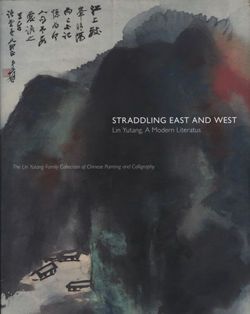Crabapple Blossoms
Zhang Daqian Chinese
Not on view
Zhang Daqian painted this pendant bough of blossoms in New York in the fall of 1965 and dedicated it to Lin Yutang's son-in-law, Li Ming (Richard Lai). The clusters of tiny pink flowers on delicate filaments and ovoid leaves identify the tree as a chuisi haitang (literally "crabapple with drooping filaments"), or a Hall crabapple, a species indigenous to China. It was a favorite of Zhang Daqian's.
In rendering the branches and leaves, Zhang Daqian adapted a technique initiated by the seventeenth-century master, Shitao (1642–1707). He first drew the bough in dark ink. After it was completely dry, he applied a second layer of lighter ink to its upper part to make it
volumetric. Finally, he added daubs of blue-green to suggest leaf buds or lichen. Leaves were rendered in the same manner. There is no bleeding between dark and light ink or between ink and color. The result is a vibrant, shimmering effect that makes the bough appear to quiver in the wind.
Due to rights restrictions, this image cannot be enlarged, viewed at full screen, or downloaded.
This artwork is meant to be viewed from right to left. Scroll left to view more.


